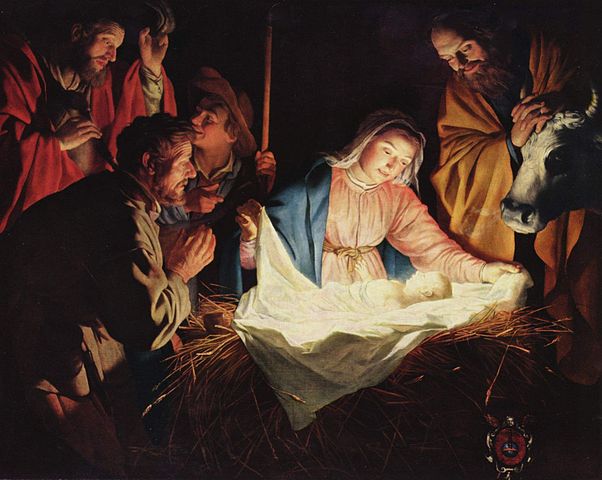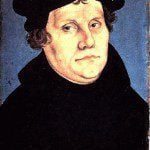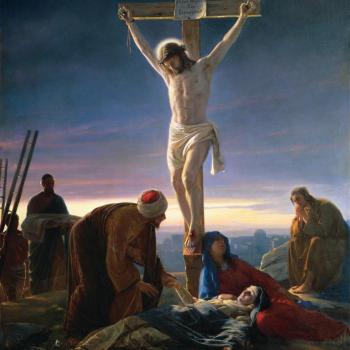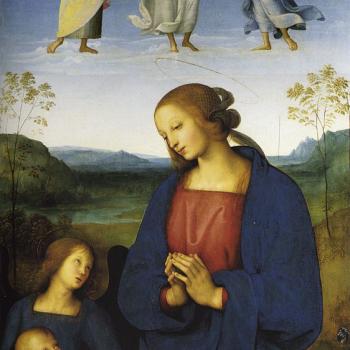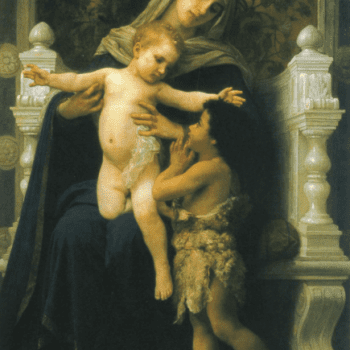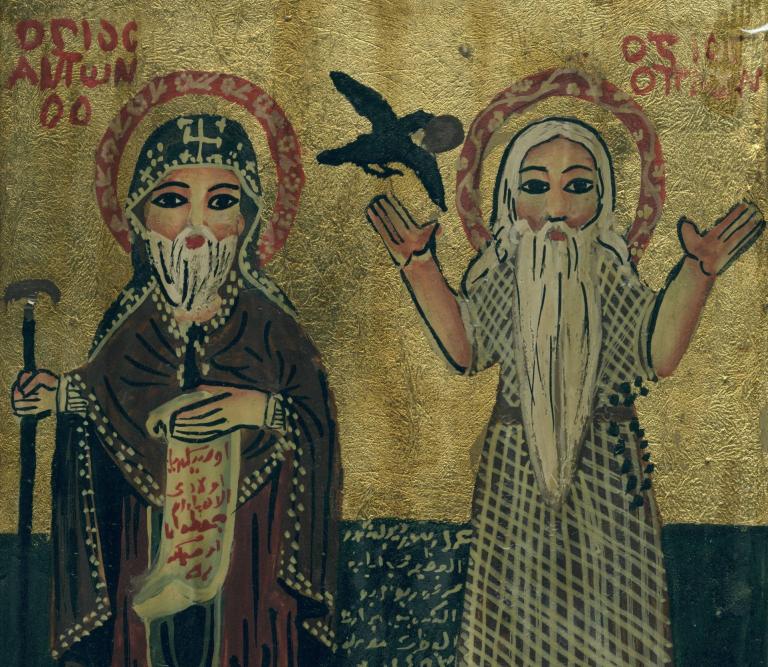It’s a Binding Catholic Dogma
The Adoration of the Shepherds (1622), by Gerard van Honthorst (1590-1656) [public domain / Wikimedia Commons]
***
[Note of 3-9-17: My friend Ryan Grant has argued that this opinion is properly classified as sententia certa: defined by Dr. Ludwig Ott as follows: “A Teaching Pertaining to Faith, i.e., theologically certain (sententia ad fidem pertinens, i.e., theologice serta) is a doctrine, on which the Teaching Authority of the Church has not yet finally pronounced, but whose truth is guaranteed by its intrinsic connection with the doctrine of revelation (theological conclusions).” — Fundamentals of Catholic Dogma, pp. 9-10. As such, it is still binding on Catholics, but is not the very highest level of Catholic dogmatic authority (de fide), according to the universal consensus of the Church and her magisterium, even though many individual theologians (including Dr. Ott himself) think it is de fide. See the very extensive and in-depth discussion on all these fine distinctions in a discussion on my Facebook page (3-9-17). ]
*****
Patristic evidences are very abundant (as are even early Protestant proclamations). Arguments from the Bible and early Church history and reason are strong as well.
“Ever-Virgin” means conception while remaining a virgin (Virgin Birth), virginity during childbirth, and perpetual virginity after the birth of Jesus (no siblings of Jesus or sexual activity).The Church has interpreted Mary’s virginity during the birth (in partu) as an inviolability of the hymen; in other words, it was a physically miraculous birth rather than a natural one. This, too, is a dogma of the Catholic Church.
Catholic apologist Mark Shea (who admitted that he was previously wrong on this issue, as I also was in a previous version of this paper), lays out all of the magisterial evidence from Denzinger, the Catechism, Vatican II and other sources, in a very helpful fashion in his paper, I Stand Corrected. Dr. Ludwig Ott (Fundamentals of Catholic Dogma, pp. 203-207) appears to have been mistaken (a rare instance!) in his opinion to the contrary. See the revised portion in the latest edition, translated by Dr. Robert Fastiggi.
* * * * *
Mary’s virginity “in partu” is sententia certa Church dogma (see my note at the top), so every Catholic is bound to submit to it as part of the overall teachings of the Church. I gladly accept all Church dogmas and doctrines. That said, personally it makes perfect sense to me. I have no problem with it whatsoever.
Traditionally, virginity literally meant (at least in one of its senses) inviolability of the hymen (more delicately or indirectly expressed as “physical integrity” or “bodily integrity”); not merely the absence of sex. See, e.g., The Catholic Encyclopedia: “Virginity”:
Physically, it implies a bodily integrity, visible evidence of which exists only in women. The Catholic Faith teaches us that God miraculously preserved this bodily integrity, in the Blessed Virgin Mary, even during and after her childbirth (see Paul IV, “Cum quorundam”, 7 August, 1555).
Modern Catholic Dictionary (Fr. John A. Hardon, S. J.) concurs:
“VIRGINITY OF MARY. The revealed dogma that the Mother of Jesus conceived without carnal intercourse, gave birth to Christ without injury to her virginity, and remained a virgin all her life. The Church’s faith in Mary’s virginal conception of Christ is expressed in all the creeds. Mary’s virginal conception was already foretold in the Old Testament by Isaiah in the famous Emmanuel prophecy: “Behold a virgin shall conceive and bear a son and his name shall be called Emmanuel” (Isaiah 7:14). Mary’s virginity includes virginity of mind, i.e., constant virginal disposition of soul; virginity of the senses, i.e., freedom from inordinate motions of sexual desire; and virginity of body, or physical integrity. The Church’s doctrine refers primarily to her bodily integrity.”
The duty for a Catholic, is to submit to Holy Mother Church, by whose guidance (led by the Holy Spirit) all these doctrines and dogmas have been received and developed through the centuries. Mary’s “physical integrity” is what “The Church’s doctrine refers primarily to” according to Fr. Hardon (whose cause is up for canonization; I knew him personally).
We are bound to believe this. It’s part and parcel of the dogma itself. The idea of “in partu” virginity (like all Marian dogmas and doctrines) was Christocentric: so as to more fully preserve the miraculous nature of the virgin birth.
“In partu” (bodily integrity / physical integrity) is part and parcel of the dogma of Mary’s perpetual virginity, and it is binding on all Catholics. It is taught in Denzinger, Enchridion symbolorum: #291, 294, 427, 442, 503, 571, 1880: all of which are cited in the Catechism of the Catholic Church, #499, as is Vatican II, Lumen Gentium, #52, #57.
Some people get this doctrine wrong (because, as so often, it’s not taught at all or not properly taught), but official Church teaching is very clear (Denzinger [Sources of Catholic Dogma] is available online; I have the latest version of it that was partially edited and translated by a friend of mine, Dr. Robert Fastiggi).
Dr. Ludwig Ott, in his well-known Fundamentals of Catholic Dogma, believes that it is de fide dogma (i.e., the highest level of authority, but again, see my note at the top), though he incongruously also cites a modernist theologian (Albert Mitterer) who fought against it. I was informed by the eminent theologian Dr. Robert Fastiggi, who will shortly help to revise this very (wonderful) book, that Ott later revised this section in 1969, to bring it into harmony with orthodoxy (which had been reiterated at Vatican II).
Mary didn’t suffer pain during childbirth, according to “in partu” — but no one will ever comprehend the pain she endured during the crucifixion. And she willingly offered up her Son (which is part of the doctrine of Mediatrix, though not a dogma at the highest levels like several of the others are). Mary knew that Jesus was to be murdered from the beginning. Imagine being a mother and knowing this the whole time.
When the Church declares that Mary was a virgin during the birth of Jesus, it’s clearly not referring to the absence of sex in that context. It’s “bodily integrity.” If that wasn’t a factor, the Church, it seems to me, would simply say that she was a virgin before Jesus was born, and afterwards. Why mention the “during” part? The miracle is that she was a virgin throughout the whole process of Jesus’ conception and birth, as well as afterwards.
The Church is simply saying (indeed, dogmatically declaring) that Mary was physically a virgin and that Jesus’ birth was a (physically) miraculous one. It has nothing to do with some silly supposed Catholic animus against sex or old celibate men against women. The entire reason is to reinforce and bolster the miraculous nature of the incarnation.
All “in partu” asserts is that Jesus’ birth was a supernatural miracle rather than a conventional childbirth. I don’t see what is objectionable about that (yet many balk at accepting this dogma). His conception was even more out of the ordinary. Conceived by the Holy Spirit? That’s not natural either. When He left this world it was supernatural (the ascension). If His conception was miraculous and His leaving the earth also was, what is so implausible about His birth being miraculous, too? It remains true that Mary carried Jesus in the usual fashion in her body for nine months. That is the natural part of the whole process.
Some things are difficult for us to understand. I struggled mightily with papal and conciliar infallibility. They were the most difficult things in the world for me to comprehend as a Protestant. I drove my new Catholic friends nuts over that, arguing for months (I had an ecumenical discussion group in my house), back in 1990. If one of them hadn’t suggested to me the Essay on the Development of Christian Doctrine by Cardinal Newman, I might still be struggling with it today. That book revolutionized my life and made me a Catholic.
Newman took away my doubts and questionings in one fell swoop. What seemed so ridiculous and utterly absurd to me (indeed, “impossible” and contrary to common sense and fact) all of a sudden became glorious. I believe that could possibly happen also with those who question Mary’s “in partu” virginity: by reading something or other, or pondering further, but in any event, this issue has no practical effect on Catholics’ day-to-day walk as disciples of Jesus.
God doesn’t want any of His children to be in doubt about or struggle over His Church and what it teaches. He wants us to be joyful and not troubled; to be at peace. He will reward anyone who gives obedient assent to a thing that doesn’t make much sense to them.
It may be a cliche: but it remains true: God’s ways are far above ours, and we can expect not to fully understand many things that the Church or the Bible or Tradition tell us are true (above all when we go through suffering and the struggles of life). That’s where faith and trust in God come in.
* * *
I have the newest edition of Denzinger’s Enchiridion symbolorum: Compendium of Creeds, Definitions, and Declarations on Matters of Faith and Morals (Ignatius, 2012).
Pope Leo the Great, in his famous letter to Flavian, or Tome (449), that was acclaimed and accepted by the Council of Chalcedon in 451, stated:
. . . the Virgin Mother, who gave birth to him in such a way that her virginity was undiminished. (Denzinger [DS] 291)
. . . quae illum ita salva virginitate edidit, quemadmodum salva virginitate concepit . . .
And:
“. . . his birth was miraculous” (DS 294)
. . . quia nativitas est mirabilis . . .
DS 299 Letter of Leo to Julianus of Cos, 13 June 449 (Licet per nostros):
. . . he was brought forth from the womb of the Mother in such a way that her fertility gave birth while her virginity remained, . . .
. . . conceptus et natus, sive quod its visceribus matris est editus, ut et fecunditas pareret et virginitas permaneret . . .
DS 368 Pope Hormisdas Letter Inter ea quae to Emperor Justinian, 26 March 521:
. . . opening the mother’s womb by his birth and yet not damaging the virginity of the Mother by the power of the Godhead.
. . . matris vulvam natus aperiens et virginitatem matris deitatis virtute non solvens.
The profession of faith of Pope Pelagius (AD 557) stated:
[H]e was born preserving the integrity of the Mother’s virginity: since she bore him while remaining a Virgin just as she conceived him as a Virgin. (DS 442)
. . . natum esse, servata integritate maternae virginitatis: quia sic eum Virgo permanens genuit, quemadmodum Virgo concepit.
The Lateran Synod of AD 649, presided over by Pope St. Martin I, held that Mary:
gave birth to him without corruption, her virginity remaining equally inviolate after his birth . . . (DS 503)
. . . qui a Deo Patre ante omnia saecula natus est, in ultimis saeculorum absque semine concepisse ex Spiritu Sancto, et incorruptibiliter eam genuisse, indissolubili permanente et post partum eiusdem virginitate . . .
The Eleventh Council of Toledo (AD 675) includes the following doctrine in its Creed:
[36] . . . He was begotten from her in a new order and by a new birth: in a new order, because, invisible in his divinity, he is shown visible in the flesh; by a new birth, because an inviolate virginity, without knowing the contact of man, supplied the matter of his body, being made fruitful by the Holy Spirit. [37] This virgin birth is neither grasped by reason nor illustrated by example. Were it grasped by reason, it would not be wonderful; were it illustrated by example, it would not be unique. (DS 533)
[36] . . . nova autem nativitate est genitus, quia intacta virginitas et virilem coitum nescivit et foecundatam per spiritum Sanctum carnis materiam ministravit. [37] Qui partus Virginis nec ratione colligitur, nec exemplo monstratur; quod si ratione colligitur, non est mirabile; si exemplo monstratur, non erit singulare.
DS 748 Pope Alexander III: Letter Ex litteris tuis to the resident Sultan in Iconium, 1169: “. . . gave birth without pain, . . .” [“peperit sine dolore”]
In 1555 Pope Paul IV published a bull, Cum quorumdam. It includes this:
[condemning the following] . . . that the same most blessed Virgin Mary is not the true Mother of God and did not always persist in the integrity of virginity, namely, before giving birth, in giving birth, and perpetually after giving birth. (DS 1880)
. . . perstitisse semper in virginitatis integritate, ante partum scilicet, in partu et perpetuo post partum . . .
Pope Clement VIII provided an authentic explanation of the mystery of Mary’s virginity in the Motu proprio Pastoralis Romani (1598) wrote: “. . . the Son of God came out of the womb of the Mother at the end of the ninth month, without pain or loss on the part of the mother herself, leaving no sign whatsoever of his emergence…and therefore it is said that the Mother of our Lord Jesus Christ was virgin before the birth, in the birth and after the birth.”
How about The Catechism of the Catholic Church? Here is what it teaches:
Mary – “ever-virgin”
499 The deepening of faith in the virginal motherhood led the Church to confess Mary’s real and perpetual virginity even in the act of giving birth to the Son of God made man. [154] In fact, Christ’s birth “did not diminish his mother’s virginal integrity but sanctified it.” [155] And so the liturgy of the Church celebrates Mary as Aeiparthenos, the “Ever-virgin”. [156]
Summary of the footnotes:
Footnote 154 lists seven texts out of Denzinger:
DS 291: Quote above from Pope Leo’s Tome.
DS 294: Second quote above from Pope Leo’s Tome.
DS 427: This is a citation from the ecumenical council of Constantinople that call’s Mary “ever-Virgin”.
DS 442: Quote above from Pope Pelagius.
DS 503: Quote above from the Lateran Synod of 649.
DS 571: This is a quote from the Council of Toledo XVI (AD 693). It says,
As the Virgin, of course, preserved the purity of virginity before conception, accordingly after birth she experienced no corruption of her integrity; for she conceived as a virgin, she gave birth as a virgin, and after birth, she preserved the purity of incorruption without subtraction.
Quae scilicet virgo sicut ante conceptionem obtinuit virginitatis pudorem, ita post partum nullam sensit integritatis corruptionem; nam virgo concepit, virgo peperit, et post partum incorruptelae pudorem sine interceptione obtinuit.
DS 1880: This is a quote from the Ecumenical Council of Trent that distinguishes the three stages of Mary’s virginity.
Footnote 155 lists one text from Vatican II’s Lumen Gentium:
LG 57: “. . . This union is manifest also at the birth of Our Lord, who did not diminish His mother’s virginal integrity but sanctified it, [*] when the Mother of God joyfully showed her firstborn Son to the shepherds and Magi.”
[* a footnote here backs up Mary’s in partu virginity with citations from the Lateran Synod and the Letter from Pope Leo to Flavian, and also a text from St. Ambrose]
Footnote 156 lists another text from Lumen Gentium:
LG 52: This text simply refers to Mary as “Ever-Virgin”.
In an address given on the occasion of the 16th centenary of the plenary council of Capua where Pope Siricius condemned Bonosus for denying the perpetual virginity of Mary, Pope St. John Paul II said that Mary “gave birth truly and in a virginal way, whereby after her delivery she was still a virgin; a virgin […] also as regards what affect her physical integrity”.
(“The Virginity of Mary”, no 6, Osservatore Romano, 25/26 May 1992, p. 13)
Pope St. John Paul II, General Audience, 28 August 1996:
Her virginity ‘during and after giving birth’, although implicit in the title virgin already attributed to Mary from the Church’s earliest days, became the object of deep doctrinal study since some began explicitly to cast doubts on it. Pope St Hormisdas explains that ‘the Son of God became Son of man, born in time in the manner of a man, opening his mother’s womb to birth [cf. Lk 2:23] and, through God’s power, not dissolving his mother’s virginity’ (DS 368). This doctrine was confirmed by the Second Vatican Council, which states that the firstborn Son of Mary ‘did not diminish his Mother’s virginal integrity but sanctified it’ (Lumen gentium, n. 57).
St. Thomas Aquinas in his Summa Theologica concurred:
We must therefore say that all these things took place miraculously by Divine power. Whence Augustine says (Sup. Joan. Tract. 121): ‘To the substance of a body in which was the Godhead closed doors were no obstacle. For truly He had power to enter in by doors not open, in Whose Birth His Mother’s virginity remained inviolate.’ [link]
On the contrary, Augustine says (Serm. de Nativ. [Supposititious), addressing himself to the Virgin-Mother: ‘In conceiving thou wast all pure, in giving birth thou wast without pain.’
I answer that, The pains of childbirth are caused by the infant opening the passage from the womb. Now it has been said above (28, 2, Replies to objections), that Christ came forth from the closed womb of His Mother, and, consequently, without opening the passage. Consequently there was no pain in that birth, . . . [link]
The Synod of Milan (390 AD), with St. Ambrose of Milan presiding, condemned the teaching of the heretic Jovinian that Mary did not give birth as a physical virgin:
Christ. . . being God came to earth in an unusual way, as He was born from the immaculate Virgin. . . . But they say perversely: she conceived as a virgin, but she did not give birth as a virgin. So a virgin could conceive, but a virgin could not give birth, though the conception always precedes and the birth follows. . . . They should believe the Apostles’ Creed, which the Roman Church always guards and preserves. . . . This is the Virgin who has conceived in the womb, the Virgin who has brought forth her Son. For thus it is written: ‘Behold, a virgin shall conceive and bear a son’ (Is 7:14); for he says not only that a virgin shall conceive, but also that a virgin shall bring forth. For what is the gate of the sanctuary, that outer gate looking towards the East, which remains shut (Ezek 44:1f.)? Is not this gate Mary, through whom the Savior entered this world . . . who conceived and brought forth as a virgin?
The Catechism of the Council of Trent (also known as the Roman Catechism) states:
But as the Conception itself transcends the order of nature, so also the birth of our Lord presents to our contemplation nothing but what is divine.
Besides, what is admirable beyond the power of thoughts or words to express, He is born of His Mother without any diminution of her maternal virginity, just as He afterwards went forth from the sepulchre while it was closed and sealed, and entered the room in which His disciples were assembled, the doors being shut; or, not to depart from every-day examples, just as the rays of the sun penetrate without breaking or injuring in the least the solid substance of glass, so after a like but more exalted manner did Jesus Christ come forth from His mother’s womb without injury to her maternal virginity. This immaculate and perpetual virginity forms, therefore, the just theme of our eulogy. Such was the work of the Holy Ghost, who at the Conception and birth of the Son so favoured the Virgin Mother as to impart to her fecundity while preserving inviolate her perpetual virginity….
To Eve it was said: ‘In pain you shall bring forth children’ (Gen. 3:16). Mary was exempt from this law, for preserving her virginal integrity inviolate, she brought forth Jesus the Son of God, without experiencing, as we have already said, any sense of pain. (“The Creed” Article III)
On June 10, 1992, during a talk in Capua, Italy, Pope St. John Paul II said: “It is a well-known fact that some of the Church Fathers set us a significant parallel between the begetting of Christ ex intacta virgine [from the inviolate Virgin] and his resurrection ex intacto sepulcro [from the sealed tomb].”
One of the prayers on the Feast of the Nativity in the Byzantine Liturgy states: “According to His good pleasure, by a strange self-emptying, He passed through thy womb, yet kept it sealed.”
For more (very in-depth!) reading on the topic:
The Virginity of Our Lady In Partu: The Painless, Miraculous Birth of Our Lord Jesus Christ
The Virginity of the Mother of God (St. Thomas Aquinas: Summa Theologica)
Whether Christ was Born Without His Mother Suffering? (St. Thomas Aquinas: Summa Theologica)
Mary’s Virginity During Childbirth: Ott’s Revision & Latin Analysis (Dave Armstrong)
The Virginitas In Partu Revisited (Msgr. Arthur Calkins)
Mary’s Perpetual Virginity (Catholics United for the Faith)
The Theology of the Virginity In Partu (William B. Smith, Marian Studies, 1980)
The virgin birth of Christ — What the Church really teaches (Fr. Ryan Erlenbush)
Our Lady’s Physical Virginity in the Birth of Jesus (Fr. William Most)
The Perpetual Virginity of the Dei Para: Virginity During Birth (Ryan Grant)


